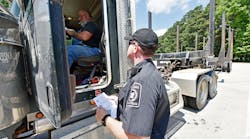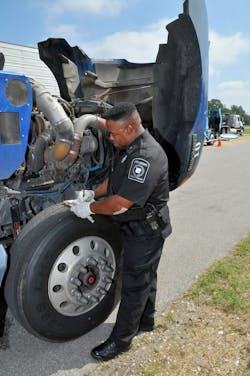The long-promised revision to the way trucking companies are rated by the U.S. government will be published Jan. 21, the Federal Motor Carrier Safety Administration announced Friday.
The Safety Fitness Determination (SFD) Notice of Proposed Rulemaking (NPRM) would update FMCSA’s safety fitness methodology by integrating on-road safety data from inspections, along with the results of carrier investigations and crash reports, to determine a motor carrier’s overall safety fitness. (A pre-publication copy of the NPRM is here.)
In addition to refreshing the ratings each month, the proposed new system would replace the current three-tier federal ratings (used since 1982) of “satisfactory–conditional–unsatisfactory” with a single determination of “unfit,” which would require the carrier to either improve or cease operations. Implementing a dynamic, data-driven ratings system has been an FMCSA priority since the launch of the Compliance, Safety, Accountability program (CSA) in late 2010.
The SFD rule will permit FMCSA to assess the safety fitness of approximately 75,000 companies a month. By comparison, the agency is only able to investigate 15,000 motor carriers annually—with less than half of those companies receiving a safety rating, according to FMCSA.
In the days ahead of the FMCSA announcement, a coalition of business groups wrote to transportation policy leaders in Congress to argue that the expected proposal defies various provisions of the new highway bill, the FAST Act. The coalition members are particularly concerned that FMCSA will continue to use the roadside data, even as the law calls for a reexamination of that data and its demonstrated unfairness in measuring small carriers.
But FMCSA, in its statement Friday, emphasized that the proposal “further incorporates rigorous data sufficiency standards” and would require that a significant pattern of non-compliance be documented in order for a carrier to fail a Behavior Analysis and Safety Improvement Categories (BASIC).
When assessing roadside inspection data results, the proposal uses a minimum of 11 inspections with violations in a single BASIC within a 24-month period before a motor carrier could be eligible to be identified as “unfit.” If a carrier’s individual performance meets or exceeds the failure standards in the rule, it would then fail that BASIC.
Unlike the comparative scoring used in CSA, the SFD failure standard will be fixed by the rule. A carrier’s status would not be affected by other carriers’ performance.
Failure of a BASIC based on either crash data or compliance with drug and alcohol requirements would only occur following a comprehensive investigation.
FMCSA estimates that under this proposal, less than 300 motor carriers each year would be proposed as “unfit” solely as a result of on-road safety violations. The agency reports that its own analysis has shown the carriers identified through this on-road safety data have crash rates of almost four times the national average.
Industry reaction
The American Trucking Assns. supports greater use of performance data, rather than paperwork violations, to make motor carrier safety fitness determinations, spokesman Sean McNally told Fleet Owner shortly after the proposal was announced.
"However, we have serious concerns about the use of CSA Safety Measurement System data for this purpose," McNally said. "As FMCSA is aware, a 2014 Government Accountability Office report found that of the 750 different types of violations in the FMCSA system, only two had sufficient data to establish a substantial and statistically reliable relationship with crash risk. In addition, ATA is troubled by FMCSA’s proposal to set different 'failure thresholds' for carriers based on exposure. In effect, doing so sets a different safety bar for small and large carriers."




